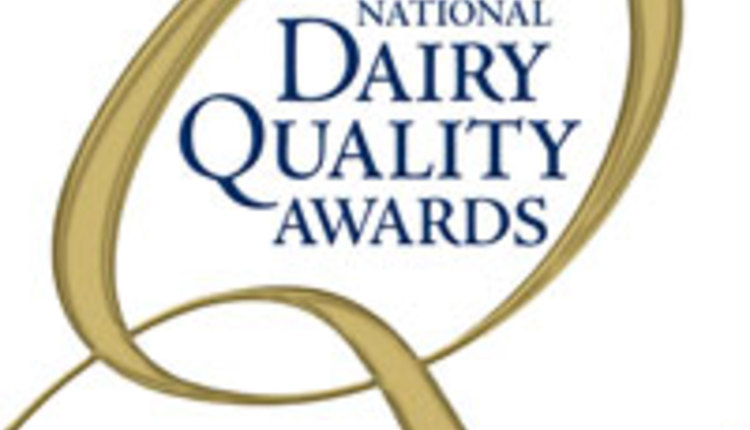
The information below has been supplied by dairy marketers and other industry organizations. It has not been edited, verified or endorsed by Hoard’s Dairyman.
DULUTH, Ga. — “Our industry has done a great job getting cows to produce more milk,” said Luciano Caixeta, DVM, PhD, associate professor, University of Minnesota. “Of course, this is usually a good thing — until dry-off.”
When a cow makes the transition from a milking cow to a dry cow, she doesn’t have the ability to shut off her milk production overnight. Once that animal stops milking, they can experience udder engorgement, serious discomfort and milk leakage, resulting in less rest time and a higher risk of mastitis.
To help cows transition into the dry period more smoothly, Bovikalc® Dry supplements have been added to the dry-off toolbox. A relatively new option in the dairy industry, BOVIKALC Dry is an oral mineral bolus that’s designed to decrease dry matter intake and reduce milk production at dry-off.
And now, new research conducted by Dr. Caixeta and his colleagues at the University of Minnesota showed BOVIKALC Dry reduced clinical mastitis risk and improved comfort.1,2
Study overview
The main objectives of the study were to evaluate the impact of BOVIKALC Dry on somatic cell count, clinical mastitis, culling, and total daily activity and rumination.1,2
Dr. Caixeta and his team conducted the study on three herds with a total of 901 cows enrolled. Four hundred forty-three cows received BOVIKALC Dry boluses at dry-off, and the rest did not. After freshening, monthly somatic cell counts (reported as linear score), clinical mastitis events, milk production and culling were recorded through 300 days in milk (DIM).1
In one herd, total daily activity and daily rumination were monitored in 64 cows, from seven days before through 14 days after dry-off. Thirty of the cows received Bovikalc® Dry boluses, and 34 did not.2
Study results
Cows that were given BOVIKALC Dry supplements saw improved udder health and cow comfort versus the control group.1,2 The key findings from the study were:
No. 1: Cows given BOVIKALC Dry had lower:1
· Somatic cell count: On the first two monthly tests after calving, cows had lower linear scores (somatic cell counts) (P = 0.04, P = 0.02).
· Clinical mastitis risk: Clinical mastitis risk was 22% lower by 90 DIM and 25% lower by 300 DIM.
· Risk of removal from the herd: The risk of removal from the herd was 30% lower by 90 DIM and 18% by 300 DIM.

Figure 1. Cows given BOVIKALC Dry had a lower risk of clinical mastitis, and a lower risk of getting removed from the herd.
“Not only did we see an impact on clinical mastitis, but we also saw an impact on subclinical mastitis due to the lower somatic cell counts,” explained Dr. Caixeta. “We know mastitis is a costly headache for producers, so we were excited to see these results.”
Linda Tikofsky, DVM, Boehringer Ingelheim, agreed and added, “Following these animals through 300 DIM confirmed that BOVIKALC Dry doesn’t just have a positive impact during the transition period. It has a positive impact well into a cow’s lactation. It’s a good reminder that what we do during the dry period affects the cow throughout her next lactation.”
No. 2: Cows were more comfortable and had more lying time after dry-off.2
Cows that were given Bovikalc® Dry boluses were less active during the week after dry-off. The greatest difference between groups was the day after dry-off, at 33 minutes more lying time compared to untreated cows.
“Think about what a difference a 30-minute nap can make,” said Dr. Tikofsky. “Additional rest is especially important for cows just transitioning from the milking herd to the dry cow pen.”
No. 3: Cows given BOVIKALC Dry had limited changes in rumination.2
The day after BOVIKALC Dry boluses were given, there was a 10% drop in rumination, which returned to normal within 24 hours.
“Discovering cows were lying down longer without substantial changes in rumination was an interesting finding for our team,” noted Dr. Caixeta. “It indicated to us that cows were lying down longer because they were more comfortable. If we would have seen a significant drop in rumination, that would have indicated that cows weren’t feeling well.”
A modern solution for the modern dairy cow
“Having high-producing cows at dry-off is a modern challenge, and it’s a good challenge to have, because it means we’re doing well and our cows are producing well,” said Dr. Caixeta. “But as we continue to improve, we need to up our game to make sure that we’re giving our animals the best care. Adding BOVIKALC Dry to our dry-off program helps us address comfort, improve udder health, and it helps keeps our cows in the herd longer.”1,2
Dr. Tikofsky added, “It’s a one-time intervention that has ripple effects on cow health through the entire next lactation. And this is another way to show consumers that animal welfare is top of mind for us.”

